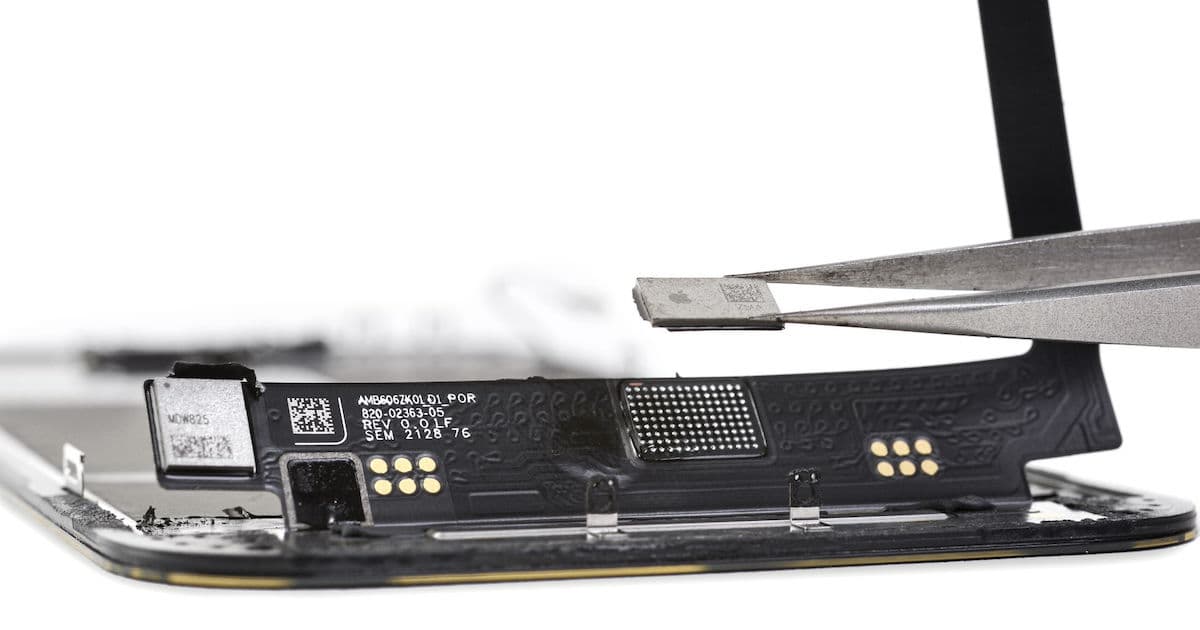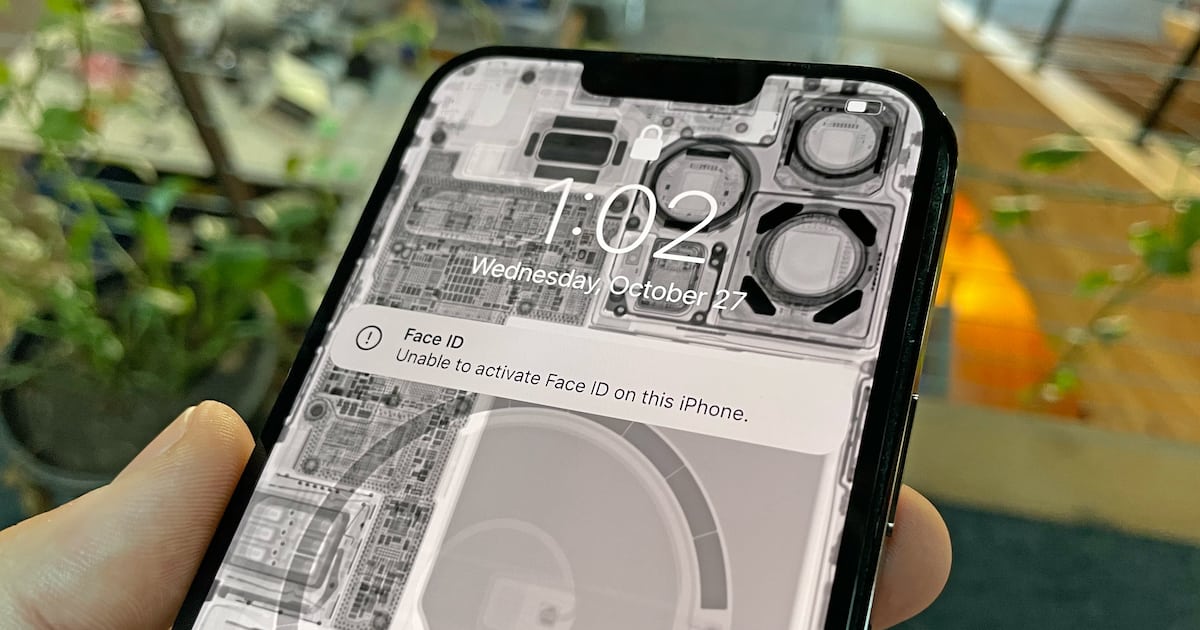A renowned smartphone teardown team has learned something troubling about the iPhone 13. Apple has added a component to the screen of the latest iPhone. Replacing your iPhone 13 screen through a third party repair service could break FaceID.
What’s Different About the iPhone 13 Screen?
The site, iFixit, has been doing teardowns of iPhones for years. It’s also well-known for its guides and tutorials helping people fix their devices. iFixit has learned that replacing the iPhone 13 screen deactivates FaceID. Even if you take the screen from another iPhone 13, your iPhone displays an error message that says “Unable to activate Face ID on this iPhone.”
The problem is that Cupertino has added a small microcontroller to the iPhone 13 screen. Unless Apple pairs your iPhone and this microcontroller, FaceID will not function. Worse yet, the pairing process requires tools only Apple and members of its Independent Repair Provider Program have access to.
Another Attack on Right to Repair?
Being a part of Apple’s Independent Repair Provider Program is no easy task. Many reports indicate that repair shops must deal with horribly restrictive contracts and requirements to have access to the required tools. The most important of these tools logs the repair to Apple’s cloud servers. It synchronizes the serial numbers of the phone and screen.
iFixit did discover a workaround that can bypass the problem. However, this requires carefully removing the microcontroller from the original screen and then soldering it onto the replacement. It’s a very difficult and work-intensive process.

While it’s possible this problem is little more than a bug, iFixit says that seems unlikely.
Technically, yes: Face ID failure could be a very specific hardware bug for one of the most commonly replaced components, one that somehow made it through testing, didn’t get fixed in a major software update, and just happens to lock out the kind of independent repair from which the company doesn’t profit.
More likely, though, is that this is a strategy, not an oversight. This situation makes AppleCare all but required for newer iPhones, unless you happen to know that your local repair shop is ready for the challenge. Or you simply plan to never drop your phone.
Cupertino has been opposed to the consumer’s right to repair for years. Apple has, in previous models of the iPhone, introduced similar repair restrictions. Among those have been Touch ID, True Tone functionality, and replacing iPhone 12 cameras.

Jeff:
I could be wrong, but it seems to me that the issue is one of security, full stop.
All of Apple’s security protocols remain as closely guarded as US Naval nuclear submarine technology. No one outside of Apple is authorised to muck with anything having to do, for example, with Secure Enclave. Apple have routinely restricted third party access to their proprietary AI. And, while it was still under active consideration, Apple never published their protocols for CSAM identification (there were multiple potential technologies and solutions about which Apple remained mum).
Given to potential threat actors in theatre, principally those with access to state-level resources, the capacity to reverse engineer Apple’s commercial security solutions would likely be child’s play, and enable compromise at population scale.
I have seen no cost estimates, but given Apple’s revenue, profits and market cap, I should think that income from keeping device repairs in house would be minimal to negligible, and more costly to resist in court than to profit therefrom.
As I said at the beginning, I could be wrong.
I don’t believe it’s about security, but control. Apple charges exorbitantly for the parts required to replace a screen, and this microcontroller has never been a hindrance to display replacement on earlier FaceID-enabled models. I’m not sure previous models even had such a microcontroller. This is all about Apple wanting to have complete control over selling the replacement parts. Furthermore, there aren’t any security measures for FaceID inherent in the screen; FaceID authentication is performed via the front-facing camera and Secure Enclave. The whole move of requiring the microcontroller to match the exact iPhone is, as iFixit noted, totally unprecedented. It’s also liable to drive more than a few small business owners who earn a large chunk of their revenue from screen replacements to shut their doors.
@Jeff:
I completely concur with you on control. The question is, to what end?
Your argument that it is about being able to charge exorbitantly is demonstrably plausible, particularly in the absence of any cost/revenue figures or justifications from the company. I concede that I might be woefully underestimating the scope and profit margin for repairs. Too, I might be biased by the historical tendency of industry in general to prefer new purchases over repairs, and their viewing repairs as a net loss, even for major products. This could be Apple’s solution to their recognition that users are keeping their purchases, including iPhones, for longer and longer duration. In that case, controlling the repair market could possibly be profitable.
I, for one, know too little about Apple’s microcontroller in the screen, let alone the device’s other security features, to opine on potential exploits, but my sense is, given the lengths to which certain state-sponsored or state-friendly tech companies have gone, and the ferocity with which other states are insisting on removing said hardware infrastructure, hardware exploits of security systems are a vulnerability. In the spirit of ‘an ounce of prevention’ being worth more than ‘a pound of cure’, I can appreciate that the company might not want anyone coming near anything remotely related to a security feature like Face ID, including the screen microcontroller.
I’m not convinced that profit and security are mutually exclusive. If I had to bet on how Apple’s leadership sees it, it would be that security is a key component of their profitability. If anything, they are inseparable.
All about control, absolutely.
BTW: that should have read @jeff-butts. Autocorrect.
Lol. I was wondering what the heck?